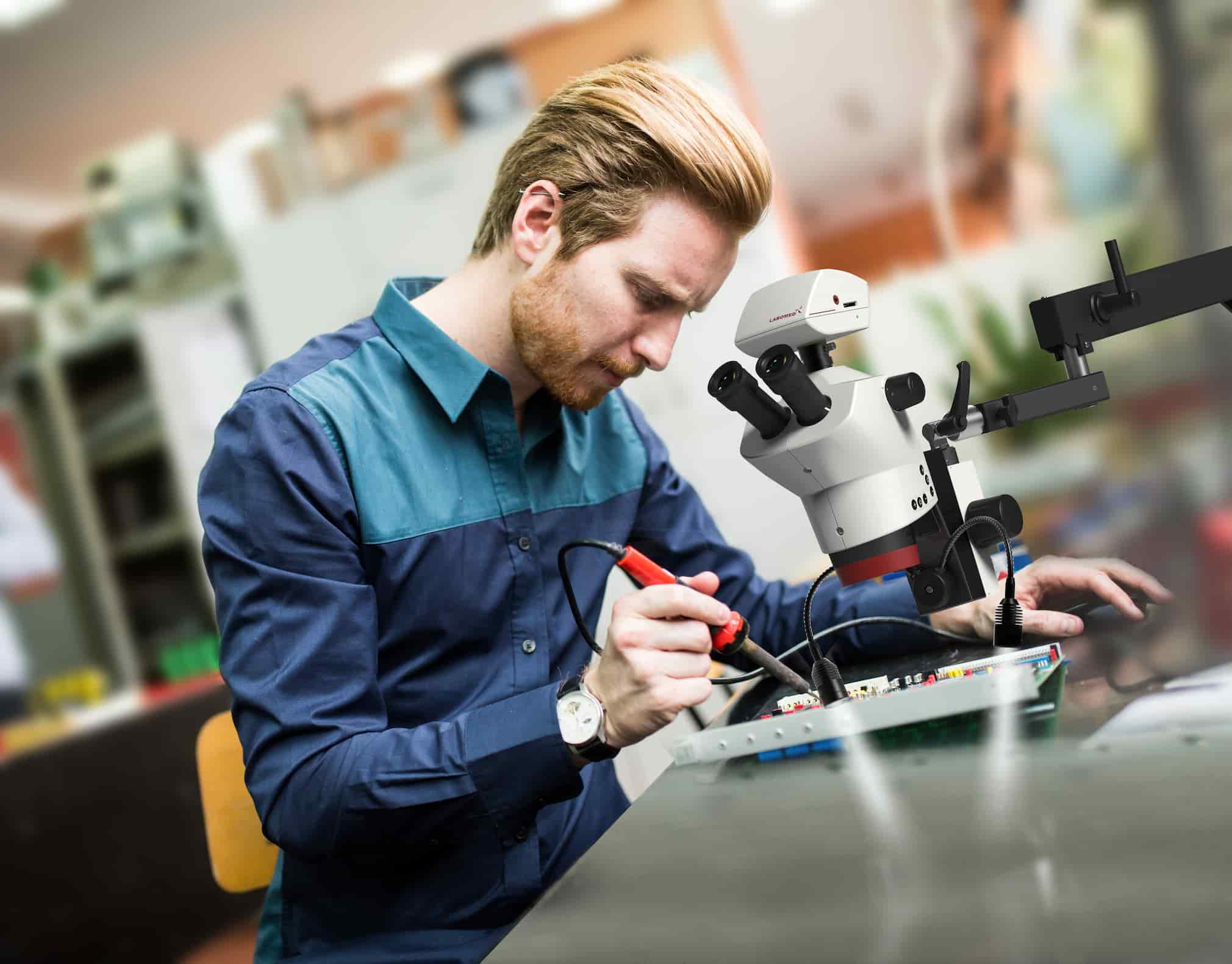Choosing the Right Microscope for Industrial and Material Sciences

Microscopy plays a critical role in industrial and material sciences, providing insights that drive quality control, product innovation, and advanced research. From analyzing circuit boards to studying the properties of new materials, selecting the right microscope can make the difference between accurate results and costly mistakes. This guide will walk you through everything you need to know when choosing the right microscope for industrial and material sciences, helping you identify the ideal solution for your specific applications.
Why Choosing the Right Microscope Matters
In industrial and material sciences, precision is non-negotiable. Whether you’re dealing with quality control, failure analysis, or materials science research, the ability to capture high resolution images is essential. Using the wrong microscope may lead to incorrect interpretations, poor efficiency, or even product recalls. By carefully evaluating your requirements and understanding the types of microscopes available, you can invest in a high quality microscope that matches your workflow and long-term needs.
Key Factors to Consider
When choosing the right microscope for your workflow, here are the most important aspects to evaluate:
1. Magnification and Resolution
Different applications demand different high magnification levels. For instance, inspecting compound microscopes may require up to 1000x magnification, while dissecting microscopes are better suited for larger surface analysis at lower magnifications.
2. Imaging Capabilities
Modern digital microscopes allow seamless image capture, documentation, and sharing. If you need detailed reporting, research presentations, or collaborative analysis, integrating a microscope camera is essential.
3. Type of Samples
Materials such as metals, polymers, ceramics, and electronics often require specialized microscopes. For example:
- Inverted microscope: Ideal for thick or large samples.
- Compound microscope: Perfect for thin slices or transparent materials.
- Digital microscopes: Versatile for a wide range of materials, with added ease of use.
4. Light Sources
Choosing the right light sources is critical. Brightfield, darkfield, phase contrast, and polarized lighting techniques allow users to highlight different aspects of their samples.
5. Ease of Use and Ergonomics
A user-friendly microscope improves productivity. Look for features such as adjustable stands, intuitive controls, and integrated software for streamlined analysis.
Types of Microscopes for Industrial and Material Sciences
1. Digital Microscope
A digital microscope offers powerful visualization paired with software integration for capturing and analyzing high resolution images. These are particularly valuable in electronics inspection and documentation-heavy industries.
2. Compound Microscopes
Compound microscopes provide high magnification and are widely used in materials science for analyzing thin slices of samples. Their ability to reveal structural details at microscopic levels makes them indispensable.
3. Dissecting Microscopes
Best suited for larger samples, dissecting microscopes are useful for surface inspections, circuit board analysis, and failure testing.
4. Inverted Microscopes
Inverted microscopes are ideal for metallurgical applications where samples are thick or opaque. They allow researchers to study the bottom surfaces of specimens without extensive preparation.
Industrial Applications of Microscopes
Microscopes are used in a wide range of industries, including:
- Electronics – For analyzing solder joints, circuit boards, and microchips.
- Automotive – Quality testing of engine components and coatings.
- Aerospace – Studying high performance composite materials.
- Pharmaceuticals – Ensuring consistent material properties for research and production.
- Research and Development – Exploring new materials science applications.
Secondary Features Worth Considering
When evaluating microscopes, additional key features may include:
- Microscope camera integration for digital archiving
- High performance software compatibility
- Adaptability to multiple types of microscopes in one lab
- Versatility for materials science applications
How to Choose the Right Industrial Microscope
If you’re still wondering how to choose the right industrial microscope, follow this checklist:
- Define your sample type and industry application.
- Establish your magnification and resolution needs.
- Consider documentation and reporting requirements.
- Evaluate lighting options and microscope solution features.
- Balance cost with durability and long-term performance.
Choosing the Right Microscope for Your Workflow
Each industry has unique requirements, so choosing the right microscope for your workflow involves balancing functionality, ease of use, and cost-effectiveness. Partnering with trusted industrial microscope manufacturers & suppliers ensures you get reliable equipment backed by expert support.
Final Thoughts: Invest in Accuracy and Reliability
Investing in the right microscope is about more than just equipment—it’s about securing accuracy, improving efficiency, and ensuring your business maintains its competitive edge. When choosing the right microscope for industrial and material sciences, prioritize versatility, reliability, and long-term usability.
Ready to find the perfect solution for your lab or industry? Explore our range of industrial microscopes designed to deliver precision and performance across diverse applications.

